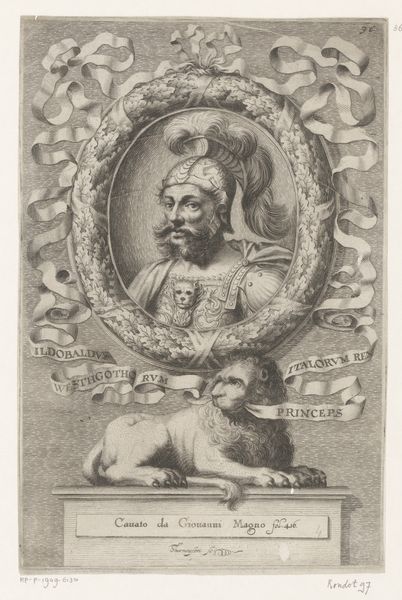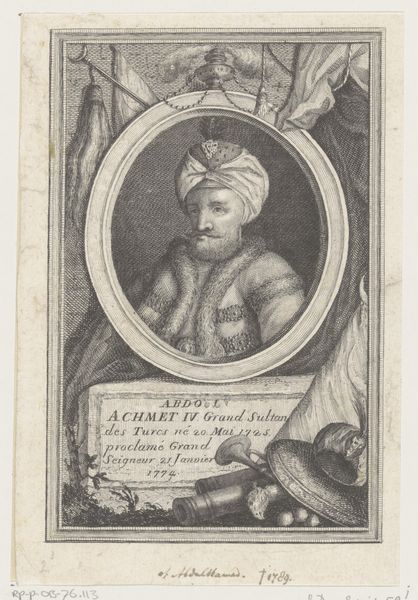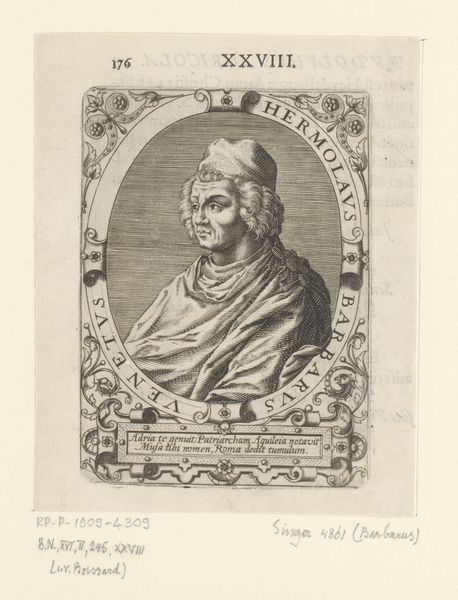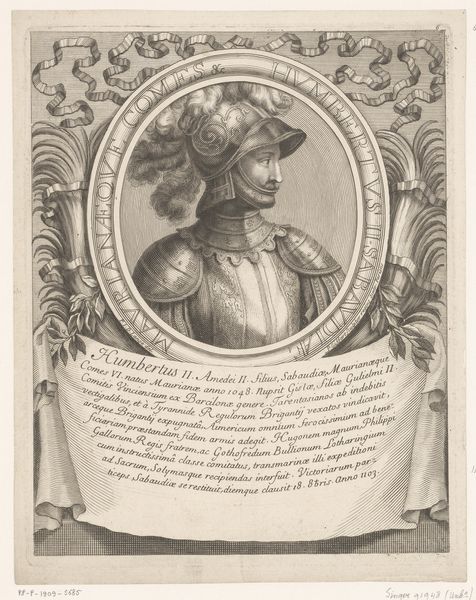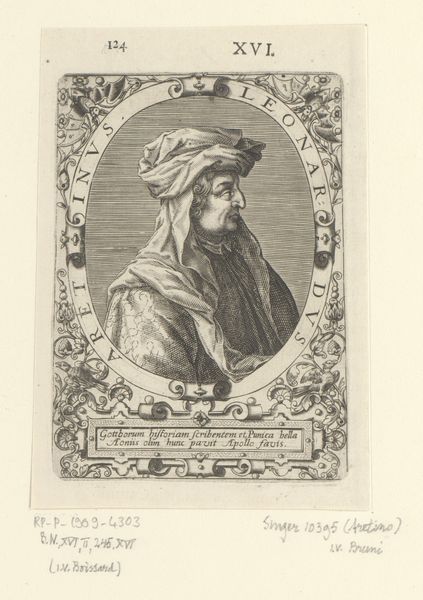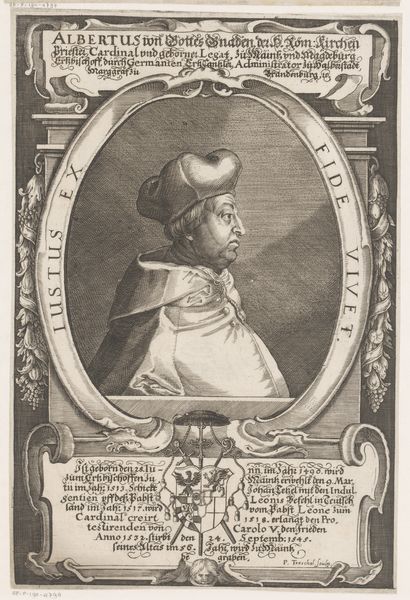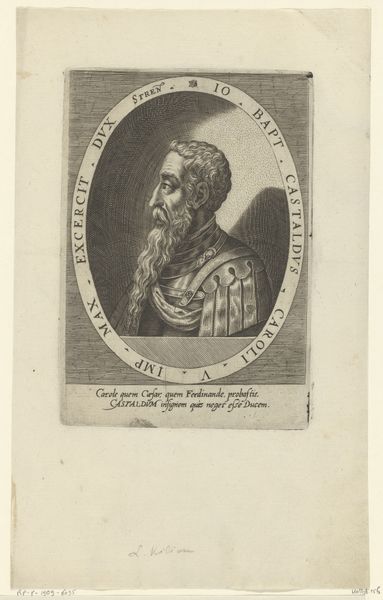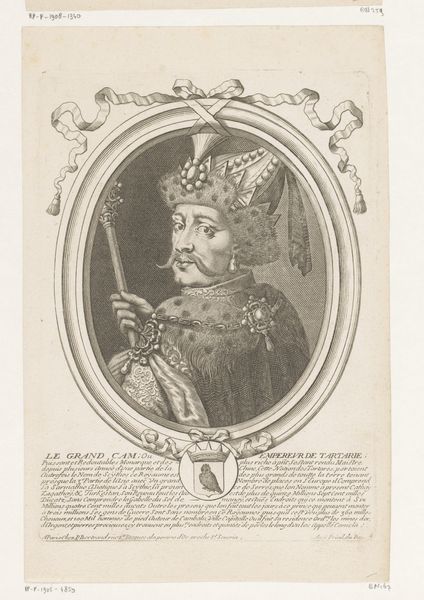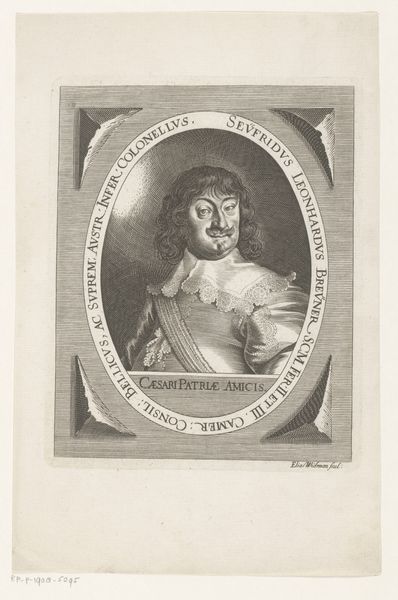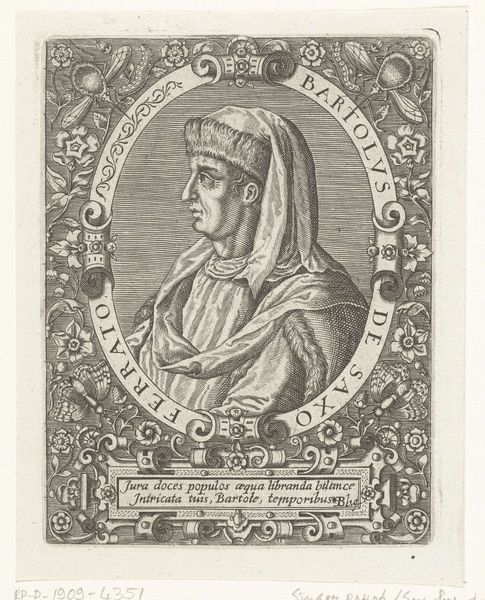
print, engraving
#
portrait
#
baroque
# print
#
old engraving style
#
portrait drawing
#
islamic-art
#
history-painting
#
engraving
Dimensions: height 238 mm, width 170 mm
Copyright: Rijks Museum: Open Domain
Curator: This engraving, currently housed in the Rijksmuseum, is titled "Portret van Ismail van Marokko," created sometime between 1678 and 1694 by Nicolas de Larmessin. The portrait is rendered in a detailed baroque style, common for depictions of nobility during this period. Editor: The very first impression I get is a sense of calculated power. The man's gaze is direct, framed by opulent textiles, but I wonder what message this image was supposed to convey. The stern expression does not offer much for accessibility. Curator: Formally speaking, note the sharp lines and tonal contrasts typical of engravings of this era. Larmessin uses hatching and cross-hatching to define the subject’s features and the textures of his garments. This really creates the depth necessary to give the subject dimension. Editor: But how does it speak to its moment? Ismail ruled Morocco with ruthless efficiency during the late 17th and early 18th centuries, known for building a powerful army composed largely of enslaved people of Sub-Saharan African descent. Images such as this can romanticize power without addressing realities on the ground. The text below also describes him as cruel. What context was surrounding that portrayal? Curator: Certainly, the inscription emphasizes the strength and bravery of Moulay Ismail, reinforcing an image of leadership. This plays into traditional baroque aesthetics: power, order, and grandeur. And to reinforce the composition, notice the intricate detail of the ornamental border—that’s the flourish baroque thrives on! Editor: Indeed, even that frame reinforces the limited view that we receive in this portrait. Considering Ismail's engagement with European powers through trade and diplomacy alongside accounts of extreme violence within his kingdom, one must consider how this image actively participated in constructing a specific, perhaps deliberately skewed, narrative for European audiences. Curator: Looking purely at the object, the artistry and craftsmanship cannot be denied. It captures an essence through skillful manipulation of the medium. Editor: And by grappling with the context of its creation, we've been able to delve into some critical narratives regarding cultural representation and power. A quick glance may not have brought up some challenging issues in the exchange between Morocco and France.
Comments
No comments
Be the first to comment and join the conversation on the ultimate creative platform.


